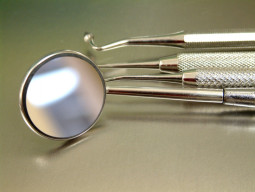
Do we really care what we have in our mouth? Certainly not, evidence of our negligence is use of mercury in dental amalgams. With growing dental problems where the world is shifting its preferences, considerable numbers of dentists are still using mercury dental amalgams. Mercury, the third-most hazardous substance, is reported to cause neurological development, reproductive problems, impaired brain growth, damaged kidneys and foetuses. Deficiencies caused to the unborn during pregnancy or in early childhood, due to mercury releases from dental mercury amalgam, are considered lifelong hazard, affecting their education and future. Dr James Rota in his interview to The Malibu Times characterised, “mercury” as the second most deadly metal on the planet next to plutonium.
The Roman Empire, according to Dr Rota, died out from complications of lead poisoning from the lead in their plates and knives. I believe that we are now being as affected by mercury poisoning from fish, local water and in unnecessary dental filling. The impacts of mercury are not anecdotal. Many countries like Sweden, Norway, Denmark and Germany have banned it. Pakistan, despite being a signatory to Minamata Convention on mercury, has not showed any considerable progress for phasing it out.
Among all the population, children under 12 years of age, pregnant women and nursing mothers are most vulnerable to mercury’s toxicity. Children’s developing brains and neurological systems are especially susceptible to the neuro-toxic effects of mercury. The Minamata Convention acknowledges this, noting that the parties are “aware of the health concerns, especially in developing countries, resulting from exposure to mercury of vulnerable populations, especially women, children, and, through them, future generations.”
Another expert, Dr Heidi Hame, has been quoted by The Malibu Times as saying that in the last five years the world has started to hear more about problems arising from mercury fillings. These days people worry about autism and carcinogens. Dr Hame shared that she no longer uses mercury amalgams with children.
Studies conducted by SDPI at 75 private clinics in which more than 90 dentists were interviewed have maintained the fact that, out of all, 43% clinics are still using mercury dental amalgams while 70% dentists did not prefer mercury fillings for children below 12 years of age, pregnant and nursing mothers and 67% support the ban on mercury dental amalgam use.
Mercury dental filling is not the end of the tunnel. There are alternatives like composite resins, glass ionomers, ceramics and others. Composite fillings are a mixture of glass or quartz filler in a resin that produces a tooth-colored filling. While practically more durable and more aesthetically pleasing than silver-coloured mercury amalgams, composites are usually slightly more expensive but are health-friendly. According to survey report by LUMHS, Hyderabad, alternatives to mercury dental amalgams are increasing day by day.
In many countries, mercury dental amalgam use has already been banned, restricted or discouraged, for children below 12 years of age and pregnant women/breast-feeding mothers.
At present, there is no legislation, specifically for hazardous mercury/mercury amalgam use in dentistry, at dental health care centres (private clinics, hospitals & teaching institutions) in Pakistan.
Awareness is not the end to the problem. Success lies in finding a solution and banning the use of mercury dental amalgams. Most recently, Mauritius advised its dentists to stop amalgam use in children and the EU is banning amalgam use for children under 15, pregnant women, and breastfeeding mothers starting 1st July 2018. It’s time to stop storing mercury in children’s mouths — and put it where it belongs: the hazardous waste bins/containers for storage.
It’s time to take the first step, ban or at least restrict and discourage mercury use to safeguard public health, especially of children, pregnant and nursing mothers in the country.
Published in The Express Tribune, May 26th, 2018.
Like Opinion & Editorial on Facebook, follow @ETOpEd on Twitter to receive all updates on all our daily pieces.




























































COMMENTS (1)
Comments are moderated and generally will be posted if they are on-topic and not abusive.
For more information, please see our Comments FAQ